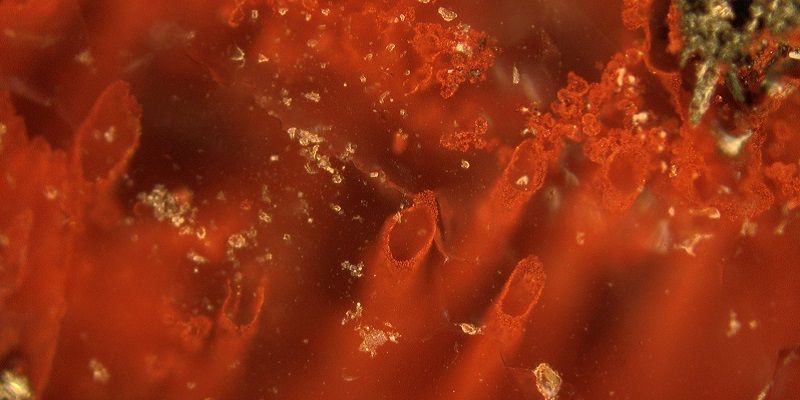
Remains of microorganisms at least 3,770 million years old have been discovered – providing direct evidence of one of the oldest life forms on Earth.
An international research team has found tiny filaments and tubes formed by bacteria encased in quartz layers, which contain some of the oldest sedimentary rocks known on Earth.
Their study, published today in Nature, describes the discovery in the Nuvvuagittuq Supracrustal Belt (NSB), Quebec.
Study co-author Dr Crispin Little, from the School of Earth and Environment at Leeds, played an important role in determining that the filaments and tubes were made by biological organisms rather than through non-biological processes, such as temperature and pressure changes in the rock.
Dr Little said: "These fossils are made of haematite – a form of iron oxide or ‘rust’ – and they have the same characteristic branching of iron-oxidising bacteria found near other hydrothermal vents today.
"The tubes and filaments were found inside structures called concretions, which are believed to be products biological decay. When we compared these specimens with those found in younger rocks from Norway, the Great Lakes area of North America and Western Australia, we found them to be mineralogically identical.
"The fact that we found these fossils in the NSB, which is believed to have formed part of a habitat for Earth’s first life forms between 3,770 and 4,300 million years ago, suggests these are the remains of one of Earth’s oldest life forms."
Prior to this discovery, the oldest microfossils reported were found in Western Australia and dated at 3,460 million years old but some scientists think they might be of non-biological origins.
The newly-discovered haematite structures were discovered alongside graphite and minerals such as apatite and carbonate, which are found in biological matter including bones and teeth and are frequently associated with fossils.
The researchers also found that the fossils co-occur with spheroidal formations which usually contain fossils in younger rocks, suggesting that the NSB haematite most likely formed when bacteria that oxidised iron for energy were fossilised in the rock.
First author Matthew Dodd, from UCL Earth Sciences and the London Centre for Nanotechnology, said: "Our discovery supports the idea that life emerged from hot, seafloor vents shortly after planet Earth formed. This speedy appearance of life on Earth fits with other evidence of recently discovered 3,700 million year old sedimentary mounds that were shaped by microorganisms.
"These discoveries demonstrate life developed on Earth at a time when Mars and Earth had liquid water at their surfaces, posing exciting questions for extra-terrestrial life. Therefore, we expect to find evidence for past life on Mars 4,000 million years ago, or if not, Earth may have been a special exception."
Further information:
Image: Haematite tubes from the NSB hydrothermal vent deposits that represent the oldest microfossils and evidence for life on Earth. The remains are at least 3,770 million years old.
Photo by Matthew Dodd
‘Evidence for early life in Earth’s oldest hydrothermal vent precipitates’, by M.S. Dodd, D. Papineau, T. Grenne, J.F. Slack, M. Rittner, F. Pirajno, J. O’Neil, C.T.S. Little, is published online by Nature on Wednesday 1st March 2017 (DOI: 10.1038/nature21377)
For interviews, please contact Anna Martinez, University of Leeds Media Relations Officer, on +44 (0)113 343 4196 or email a.martinez@leeds.ac.uk.